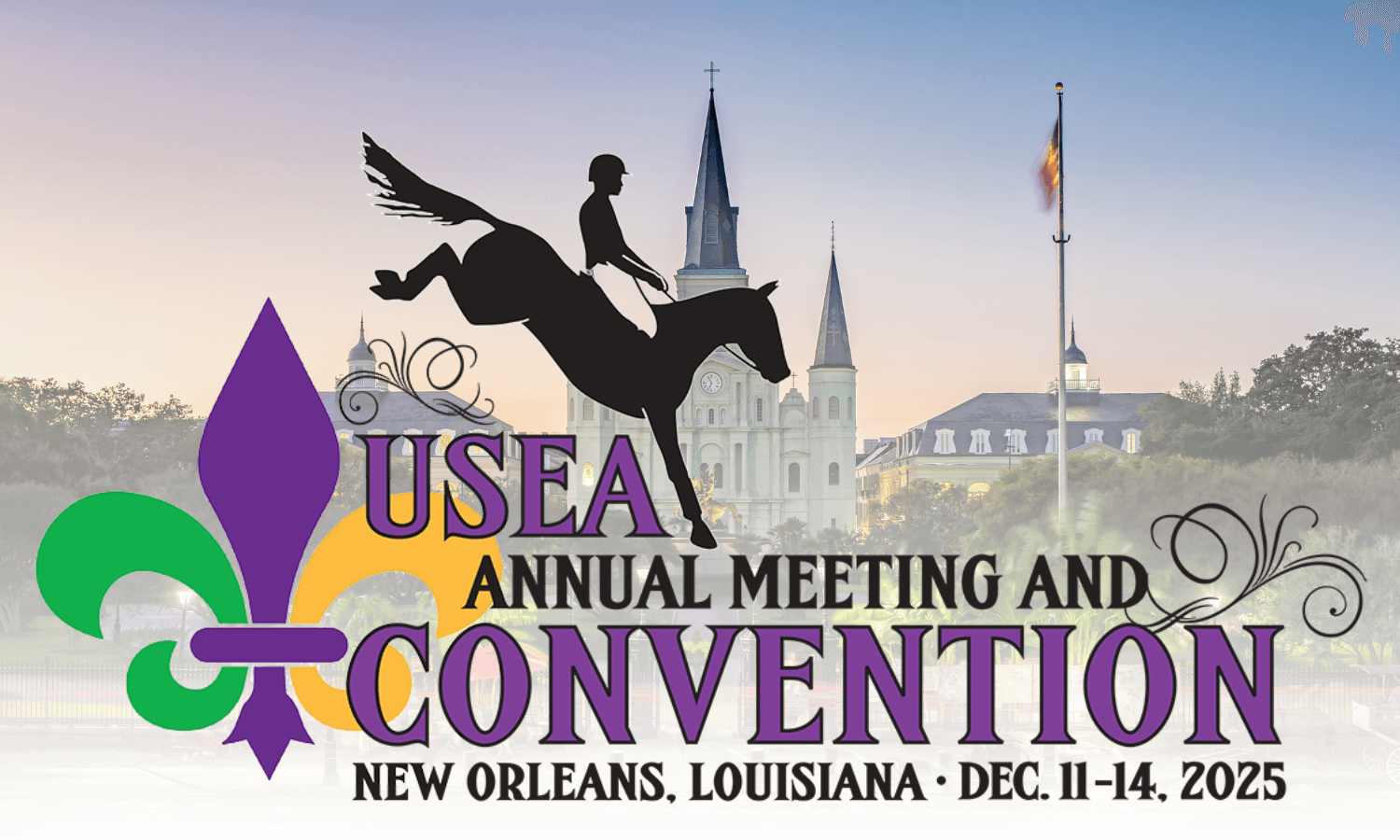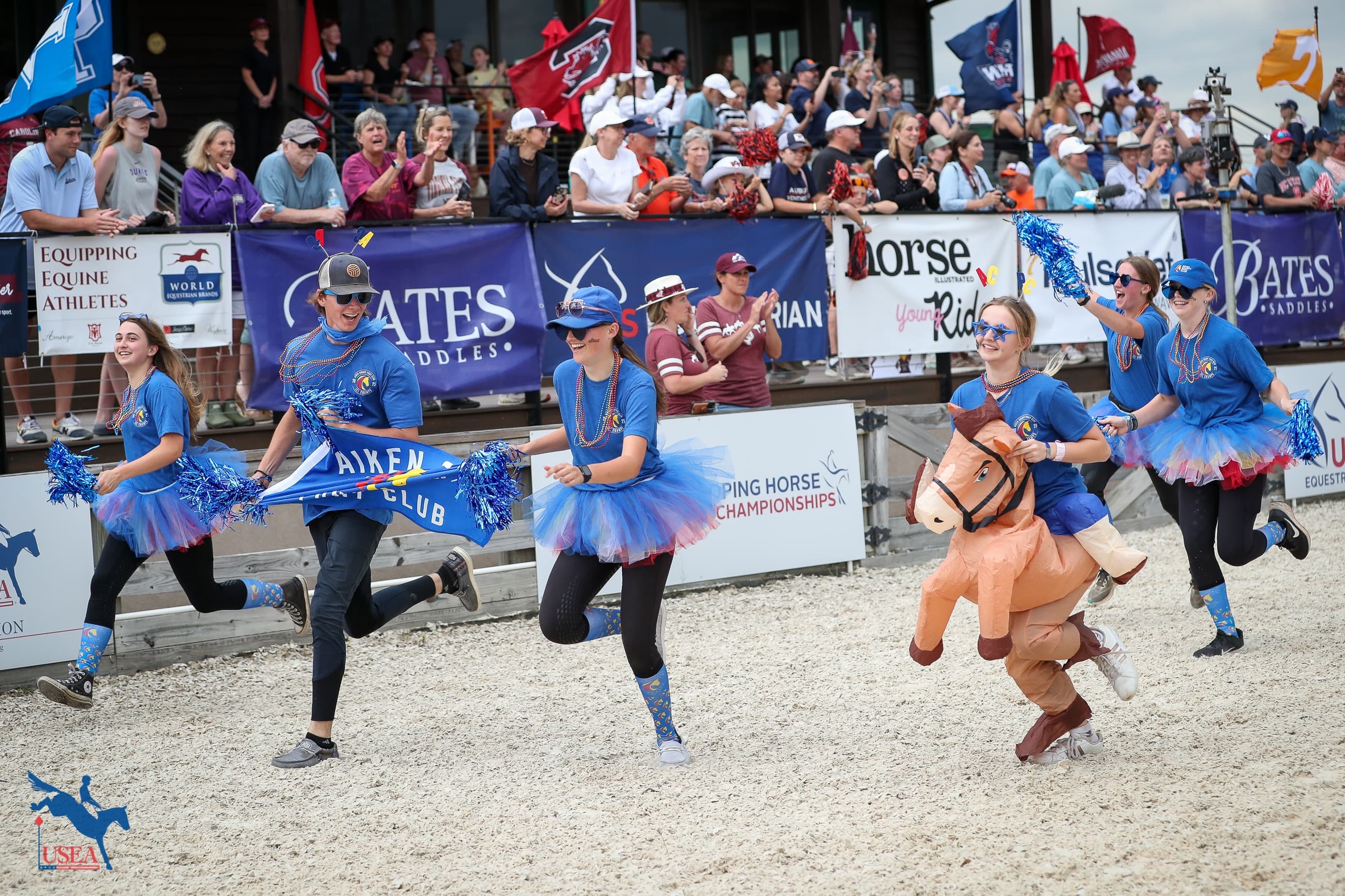Andreas Dibowski’s Words of Wisdom From Day 1 of the 2020 ICP Symposium

The USEA Educational Symposium is a unique opportunity each winter for eventers to gather together to soak in knowledge. The first two days of the 2020 Symposium focus on the USEA Instructors’ Certification Program (ICP) with attendees learning how to be better, more effective instructors.
German Olympian and world-renowned rider Andreas Dibowski is this year’s guest instructor and he spent the first day dedicated to dressage with one Advanced show jumping group to wrap-up the day. Dibowski taught the instructors to teach using demo riders and horses from Beginner Novice to Advanced of all ages, breeds, and sizes.
On going forward and straight:
“Straightness and forward riding is the basis for everything.”
“We have to explain the difference between riding forward and riding fast. That’s the first step to learn and feel. Listen to the forward riding aids from the legs. A horse will start to go through as the result of the good forward riding.”
“Your life purpose is to train your horse to be straight. One side is always going to be easy and one is going to be hard. It is important for the rider to maintain the perfect position to even begin working on straightness.”
“It is very difficult to ride straight and forward on the long side. It is easier to ride on the bend or a circle.”
“Straight correct counter canter is the basis for the correct flying change.”
“Collection means not slow, but more power.”
“Flexion is just the point behind the ears – not the full neck.”
On the half halt:
“Use your upper body to bring weight on the horse and keep your leg on. Don’t just use your rein. Do it throughout your entire circle. Work with all aids together. Even using voice. It’s a connection – it has to come back from the hind leg. Like taking a deep breath. The half halt is very easy to explain but very difficult to do in the practice.”
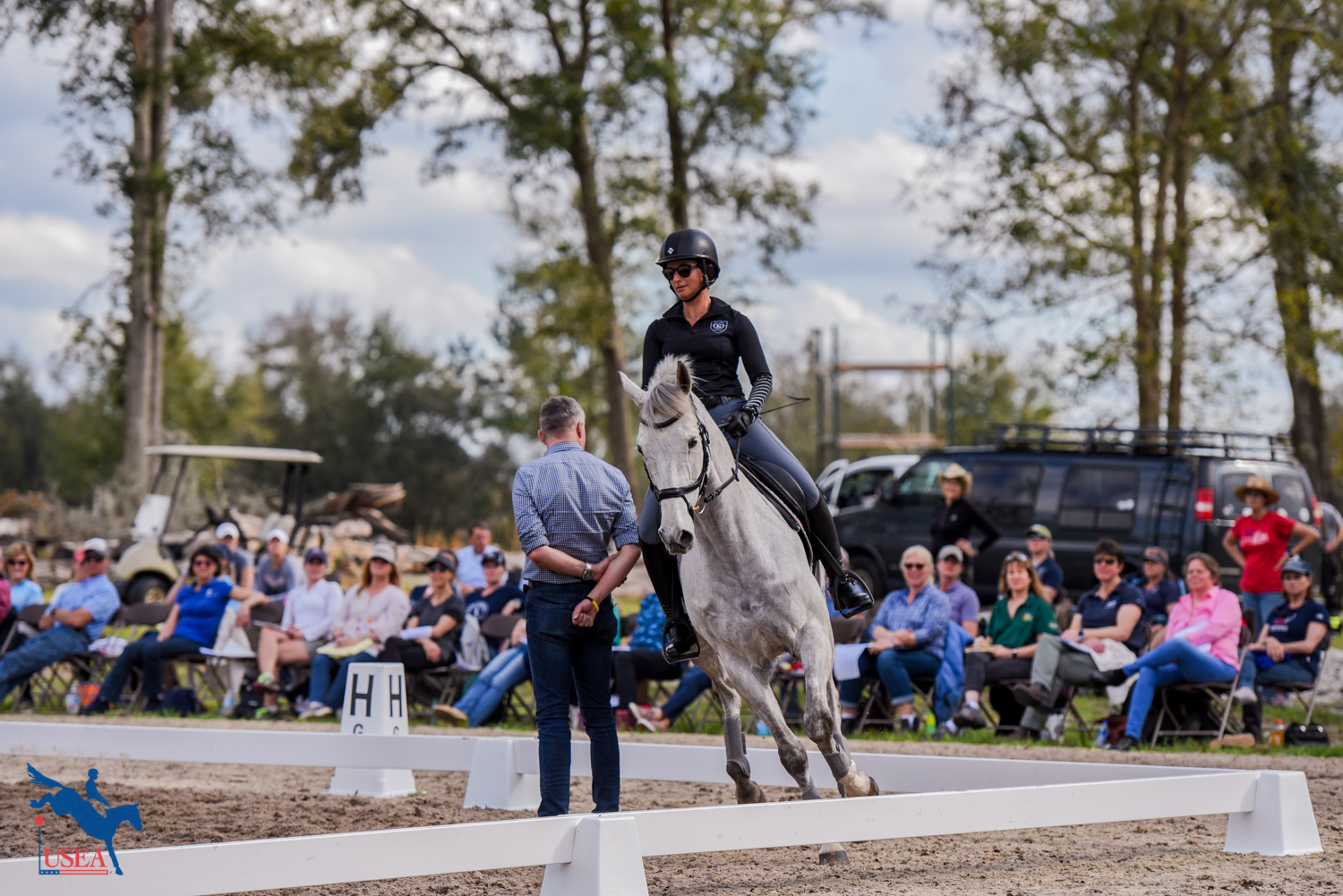
On accuracy:
“It’s not an egg. It’s a circle.”
“Don’t let your horse run away from the line [of the circle]. It’s your job to keep him on the line. If you open the door then he will use it. Close the door and show him the way. He’s happy when you tell him what to do.”
“I like seeing the rider soft, but sometimes you need to be more strict. If you have a plan make sure the horse understands it.”
“Before every corner bring him back with your body, but ride him through with your leg.”
On listening to your horse:
“The hollow side is the one the has to work more. A horse tires faster on the stiff side. Your students need to listen to the horse. It may be not good to push through. Horses will show you.”
“You can’t force anything. You have to bring the horse back to happiness. You need to see the whole package.”
“It is important that the horse has to learn to go forward. The horse is too backward. We have to look if the horse is having fun. The horse has to open his body and go forward and feel the fun again.”
“It’s not always the same. The horses make the plan.”
On finding the contact:
“You need to be able to ride your horse with a longer rein – don’t look for connection on a short rein.”
“Contact on a longer outside rein gives better control on the inside hind leg. Keep your hands together so the horse finds the stability for he needs for work.”
“Bring the shoulder in. Not bring the hind leg out. Stay on the circle and give a good feeling for the rhythm. Start to bring up your contact from your forwarding riding aids.”
“Don’t let your rein jump with a soft contact – that’s actually punishing your horse. Never give up the connection from your leg, your hand, and your own body.”
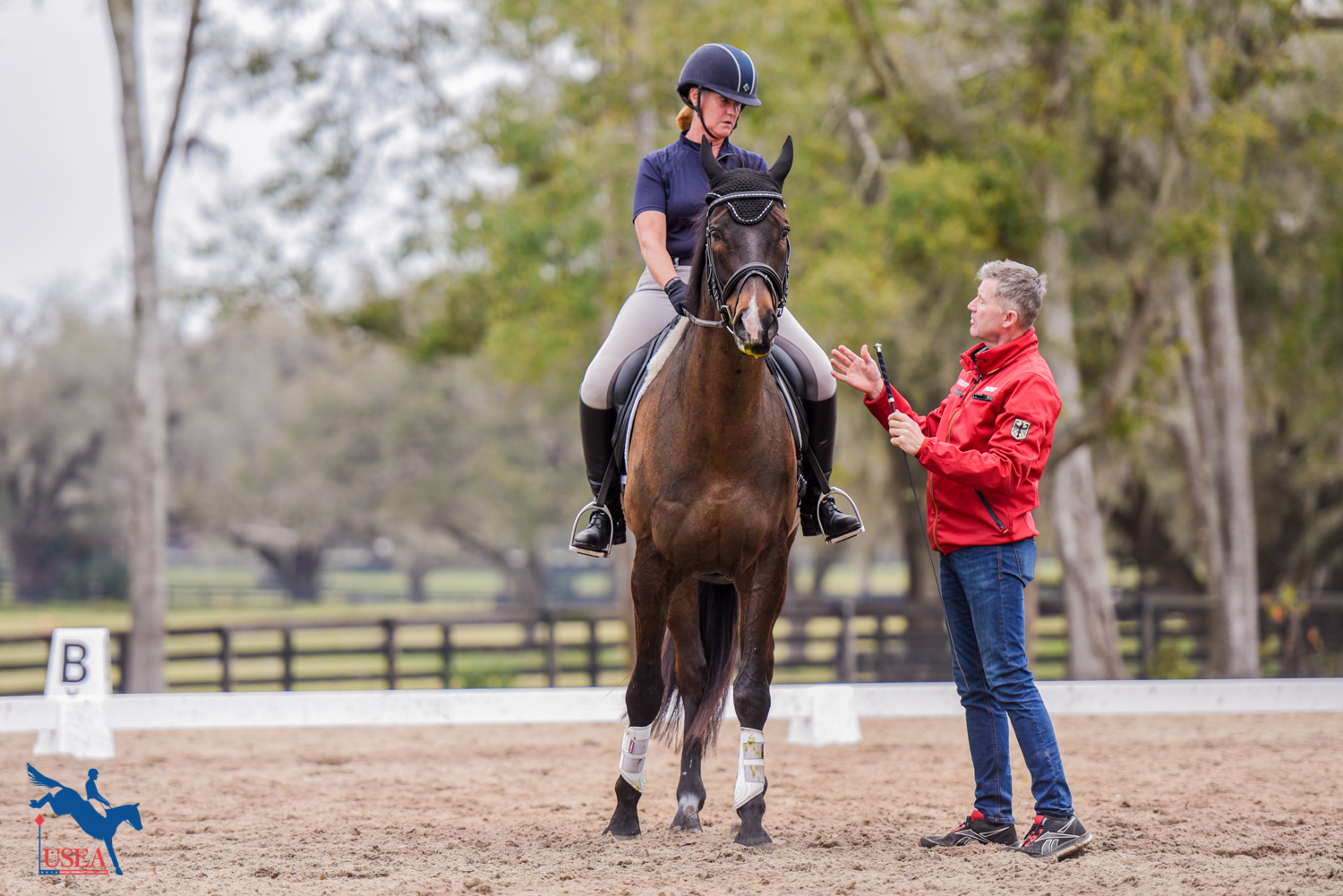
On the rider’s position:
“When I say shorten you rein don’t go forward with your body. Push down with your body. Hands Together.”
“Don’t bend your head – bend the horse’s head.”
“You can’t just focus on your horse. You need to work on your position.”
“Upper body back is support for the forward riding.”
“Don’t move your leg away during the transition.”
Dibowski’s Rules For The Day
Never rise the trot on the wrong leg. “Rising trot on the wrong leg gives the impulsion to the wrong leg.”
“The break starts after a good transition.”
“Dressage is hard work. It’s not fun.”
“Smile more”
“Breathe, stay relaxed and never forget you love the riding.”
“When you are in the arena you need to work.”
“Don’t stick to the textbook too much. You need to react to the situation.”
“Always the same with the young riders. They need more discipline.”
“Feel the rhythm.”
The 2020 USEA Educational Symposium is taking place from February 17-20 at Barnstaple South in Ocala, Florida. On-site registration is available. Learn more here.
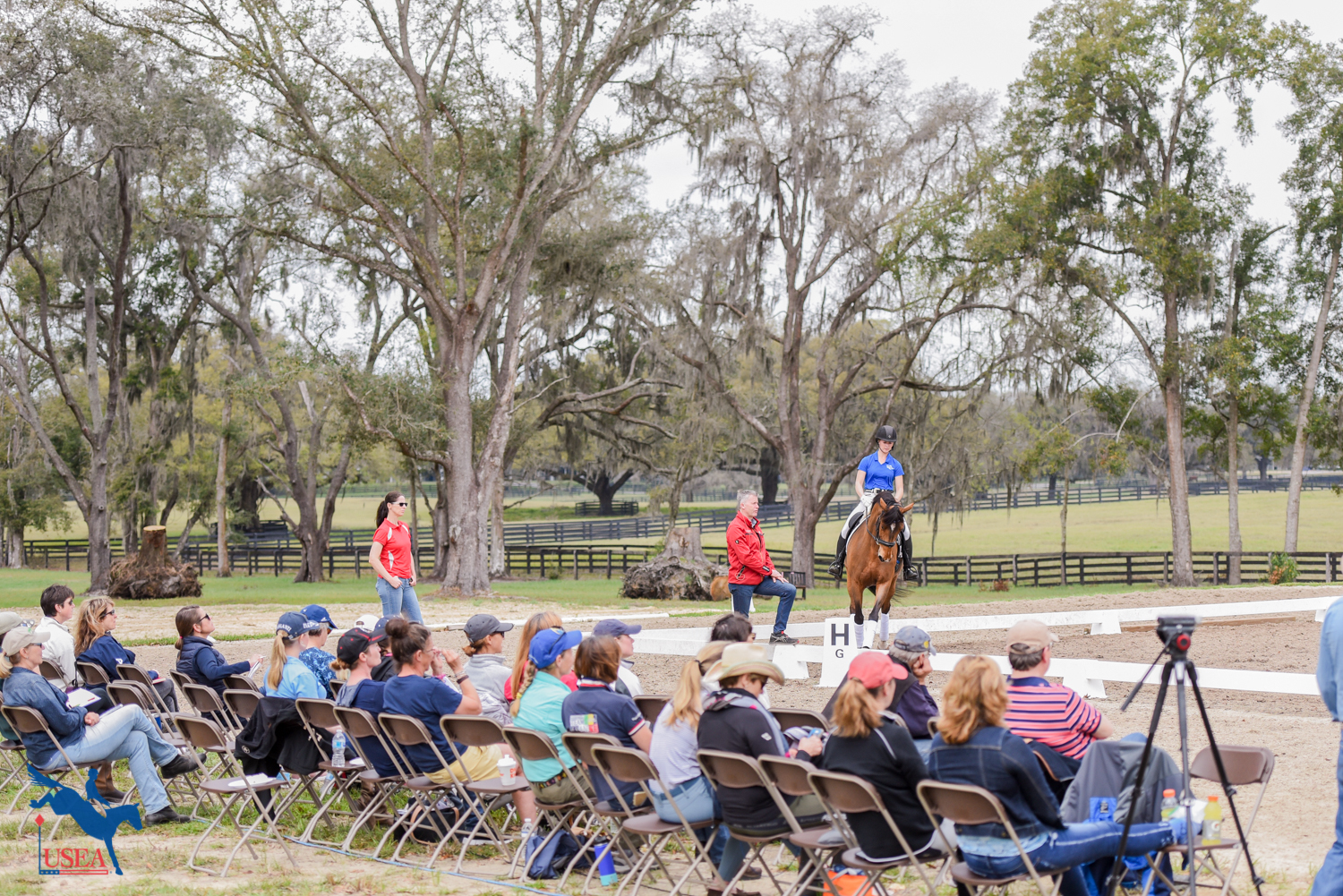
About the USEA Instructors’ Certification Program
Instructors are essential to the training of riders and horses for safe and educated participation in the sport of eventing. The USEA Instructors’ Certification Program (ICP) was initiated in 2002 to educate all levels of eventing instructor with essential training principles upon which those instructors can continue to build throughout their teaching careers. ICP offers educational workshops and assessments by which both regular instructors, Level I through Level IV, Young Event Horse (YEH) instructors, and Young Event Horse professional horse trainers can become ICP certified. Additional information about ICP’s goals, benefits, workshops, and assessments as well as names and contact information for current ICP-certified instructors, YEH instructors, and YEH professional horse trainers are available is available on the USEA website. Click here to learn more about the Instructors’ Certification Program.
The USEA would like to thank EquiAppraisal and C4 Belts for sponsoring the Instructors’ Certification Program.




















